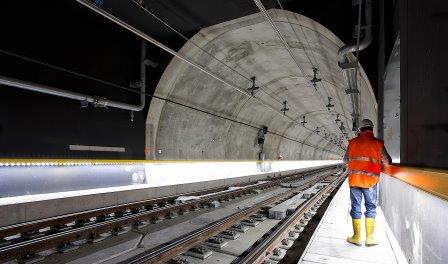Maryam Mirhadi, Ph.D., PMP, PSP
Subway station rehabilitation/renovation projects, also known as subway rehabilitation projects, are among the projects with special needs. These projects have special characteristics that differentiate them from other types of construction projects. The most important characteristics of subway rehabilitation projects from a project planning perspective are the need to account for the schedule of diversions, utility/infrastructure relocations, piggybacking opportunities, special permits, flagger availability, and work train availability.
Because of the special characteristics of subway rehabilitation projects, some considerations for scheduling these projects shall be applied with special attention and emphasis. The following provides key considerations for planning and scheduling of these projects. This list is not meant to be comprehensive. Instead, it identifies some of the key considerations that need to be given to the planning and scheduling of subway rehabilitation projects.
- Identify the activities that cannot be implemented during normal service hours (e.g., the activities that need diversion of train services). Examples include activities on the platform edge and activities on, under, or near tracks. If a project involves working on several stations on the same line, the stations that are between two immediate switches can utilize the same diversion (by piggy-backing on each other). Under these circumstances, diversion-related tasks should be scheduled properly to maximize efficiency.
Having multiple diversions on one line and between different switches is called double-heating. If the stations are not between two immediate switches, diversions are not usually scheduled at the same time to avoid double-heating and ensure train service interruptions are minimized. - Determine the preliminary number and type of the required diversions, work-trains, and other special services for the project. This determination will help the construction team consider diversions, work-trains, and other special services as project resources. This approach helps the construction team to identify the resources that are constrained. By using proper resource management strategies such as resource planning and optimization, the construction team can ensure it obtains access to these special services when the project needs these services.
- Review the special services identified with operations departments to ensure availability. If the requested diversions cannot be accommodated during required timeframes, the scope of work, design requirements, alternative construction methods, job phasing, or the project timeline should be reviewed and revised based on the available diversion plans. In addition to time, budget, and resource constraints, the availability of diversions is one of the major constraints that impact subway rehabilitation projects.
- Identify the areas and equipment that cannot concurrently be closed or taken out-of-service in each subway station to ensure of continuous and safe operation of the station. Examples include entrance stairs, platform stairs, mezzanine areas, elevators, and tracks. For instance, if two elevators in one station exist and upgrading both elevators are in the project scope of work, working on the two elevators at the same time may not be permitted.
- Identify hazardous materials such as lead, asbestos, and mercury. Performing abatement operations might be necessary before the commencement of work in areas in which hazard may be present. In these cases, direct communication and coordination between the client, contractor, and environmental agencies is crucial to identify the proper course of actions. In addition, removal of these materials during the construction phase may require special permits and equipment for which contractors should plan in advance.
- Identify the long-lead and client-furnished items. With respect to long-lead items, an opportunity may exist to fast-track some activities by creating an overlap between the design and procurement activities for the long-lead items. Moreover, early order placement for long-lead items plays an important role in making sure that long-lead items will be delivered to the project in a timely manner. In addition, the construction management needs to properly identify the client-furnished items and account for the possibility of receiving these items later than expected.
- Identify the activities that are supposed to be executed in areas that are not under the authority of the construction team. Examples include utility relocations or working in a public street. In addition, it should be determined if these activities require additional permits (e.g., DOT permits). The project team should be aware that these tasks have the potential to delay the project to a great extent because the project team usually has little control on expediting the permit application, inspection, or review processes.
In sum, from a project planning perspective, some of the key characteristics of subway rehabilitation projects that differentiate these projects from many other construction projects include the need to account for the schedule of diversions, utility/infrastructure relocations, piggybacking opportunities, special permits, flagger availability, and work-train availability. As such, some considerations for planning and scheduling of these projects shall be applied with special attention and emphasis. This article briefly discussed some of these requirements.
—
Our posts to the Insights page share fresh insights and seasoned advice about many project and construction management topics. To have the Insights monthly newsletter delivered automatically to your email inbox, please subscribe here.



